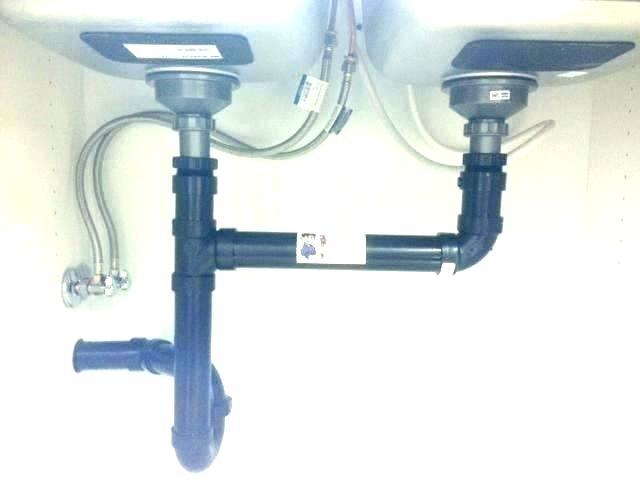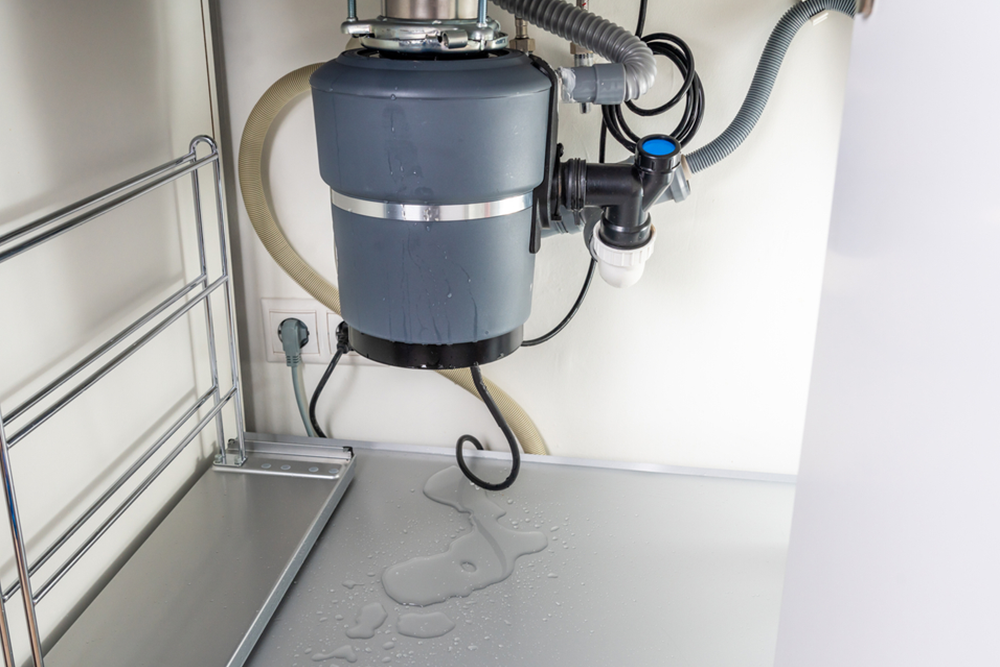Simple Ways to Repair a Leaky Waste Disposal Unit
Simple Ways to Repair a Leaky Waste Disposal Unit
Blog Article
Are you on the lookout for suggestions around Why Is My Garbage Disposal Leaking From the Bottom??

Garbage disposals are crucial kitchen area devices that assist in throwing away food waste successfully. However, a dripping garbage disposal can be an aggravating and unpleasant problem to deal with. Thankfully, many leaks can be taken care of quickly with a few simple actions. In this short article, we will certainly go over how to repair a dripping waste disposal unit effectively.
Introduction
Waste disposal unit are mounted under cooking area sinks and are made to shred food waste right into smaller items, enabling it to go through the plumbing system easily. While these tools are normally trusted, leakages can happen over time as a result of wear and tear, loose links, or damage to the device.
Step-by-Step Guide to Repairing a Dripping Garbage Disposal
Turn Off the Power
Before trying any repair work, make certain that the power to the garbage disposal device is turned off to avoid the risk of electric shock.
Situate the Leakage
Identify the specific area of the leak and identify the reason
Tighten up Links
Use a wrench to tighten any loose connections between the disposal system and the plumbing system.
Replace Seals or Gaskets
If the leak is because of used seals or gaskets, remove the old components and replace them with brand-new ones.
Patching Splits or Openings
For splits or holes in the disposal unit, usage epoxy or an ideal patching product to secure the broken location.
Recognizing the Resource of the Leakage
Before trying to deal with a dripping garbage disposal, it is necessary to identify the resource of the leak. This can typically be done via visual examination or by carrying out simple examinations.
Visual Evaluation
Evaluate the garbage disposal system carefully for any type of indications of water leak. Pay close attention to areas around seals, gaskets, and link factors.
Testing for Leaks
One method to check for leakages is by running water via the disposal unit and checking for any kind of noticeable indicators of leak.
Usual Sources Of Leakages in Trash Disposals
Worn Seals and Gaskets
Seals and gaskets play a critical duty in protecting against water from dripping out of the garbage disposal. In time, these components can deteriorate, bring about leakages around the disposal unit.
Loose Links
The connections between the waste disposal unit and the plumbing system can come to be loose over time, triggering water to leak out throughout operation.
Cracks or Openings in the Disposal Unit
Physical damages to the garbage disposal, such as splits or holes in the real estate, can additionally lead to leakages.
Tools and Products Needed for Taking Care Of a Leaking Garbage Disposal
Before starting the repair service process, gather the required tools and products, including a screwdriver, flexible wrench, plumbing technician's putty, replacement seals or gaskets, and epoxy or patching material for fixing fractures or openings.
Examining the Garbage Disposal After Repair Service
As soon as the repair work is total, check the garbage disposal by running water through it to make certain that the leakage has been dealt with.
Preventive Maintenance Tips to Stay Clear Of Future Leaks
To stop future leaks, it is necessary to execute routine upkeep on your waste disposal unit. This consists of keeping it tidy, avoiding placing non-food items or difficult things down the disposal, and regularly looking for leakages or other problems.
Verdict
To conclude, fixing a leaking waste disposal unit is a relatively straightforward procedure that can be finished with basic devices and materials. By complying with the actions detailed in this article and exercising preventive maintenance, you can keep your waste disposal unit in good working problem and stay clear of expensive fixings in the future.
HERE’S HOW TO FIX YOUR GARBAGE DISPOSAL
WHAT TO DO IF SOMETHING IS STUCK IN YOUR GARBAGE DISPOSAL
If the impeller won’t turn, there’s probably something stuck in the disposal. It could be a steak bone or peach pit, although plumbers report pulling all sorts of inappropriate objects out of disposals, such as bottle caps or aluminum foil. Make sure power to the disposal is off, and look inside to see if you can see the source of the jam.
Never stick your fingers in a disposal. Pull out anything you see with tongs or pliers.
If the disposal still won’t work, it may be time to call a plumber or consider buying a new disposal. GEM Plumbing & Heating is here for all of your garbage disposal needs.
WHAT TO DO IF YOUR GARBAGE DISPOSAL DRAIN IS CLOGGED
Take everything out from underneath your sink and put a bucket or other container under your disposal to catch any water that drains out. Disconnect your disposal from the power supply. If it’s plugged into a wall outlet, unplug it. If it’s hardwired into an electrical box, go to the electrical panel and turn off the breaker for the disposal. Pour ¼ cup of baking soda into the drain, followed by ½ cup of white vinegar. Give the solution a few minutes to fizz and do its work. Look into the disposal with a flashlight to see if you can see an object that might be causing the clog. If you see it, remove it using tongs or pliers. MORE TIPS ON DEALING WITH A CLOGGED GARBAGE DISPOSAL
Never use drain cleaner in a garbage disposal. It can damage the plastic parts inside the disposal. You can also be splashed with the caustic liquid while working to clear the clog. Beware! Never stick your fingers into a garbage disposal. Trust us — not a good idea. In many instances, your dishwasher drains through your garbage disposal. This allows the disposal to grind any large food particles that may be drained out of your dishwasher. There are some jurisdictions, however, where the plumbing code prohibits such a connection. WHAT TO DO WHEN YOUR DISHWASHER DRAINS THROUGH THE DISPOSAL
Run some water in the sink so your plunger has at least a ½-inch of water to create a seal and plunge vigorously up and down several times. You may need to repeat this several times. Run hot water down the drain to clear any residue that remains.

As a fervent reader about Why Is , I assumed sharing that piece of content was really helpful. Sharing is good. Helping people is fun. Thank-you for going through it.
Call Today Report this page